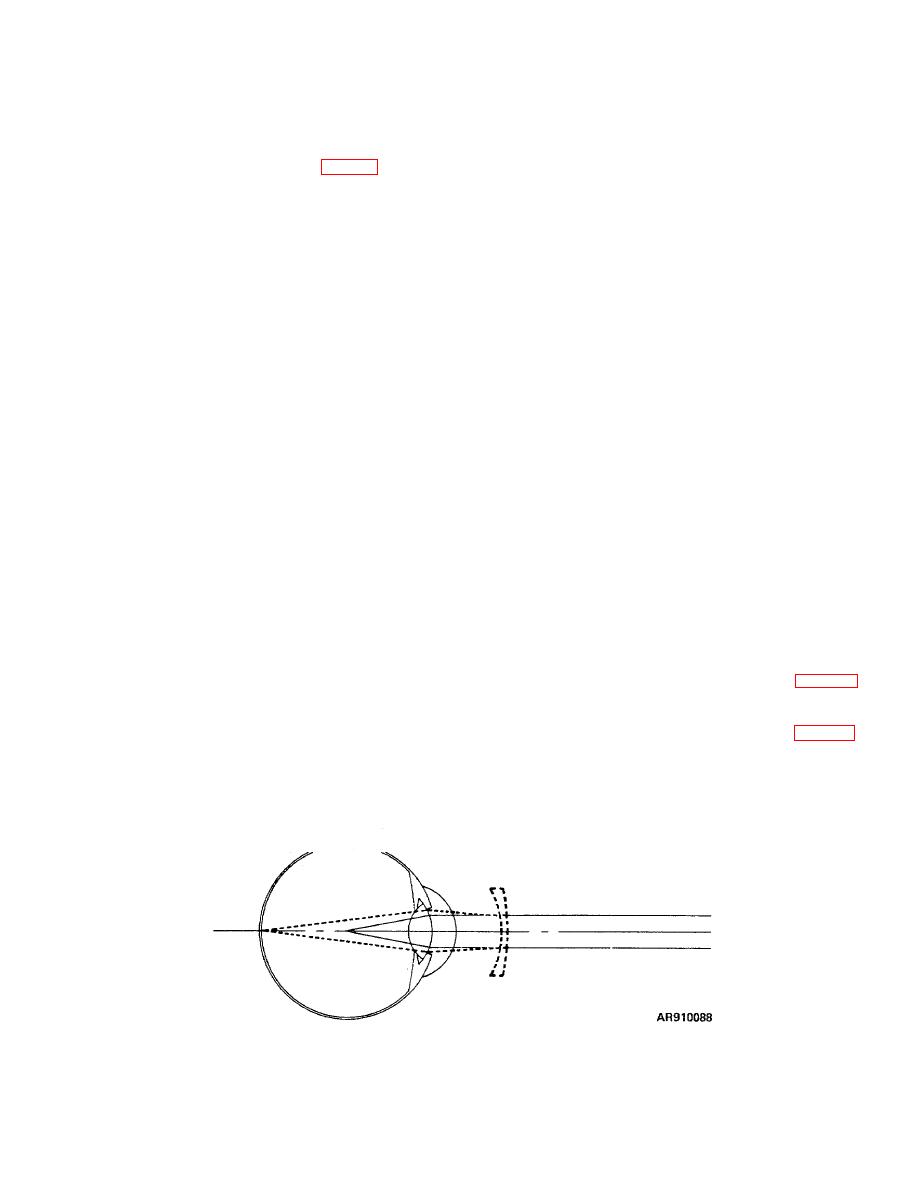 |
|||
|
|
|||
|
Page Title:
Section IV. DEFECTS AND LIMITATIONS OF VISION |
|
||
| ||||||||||
|
|
 TM 9-258
i. Angles of convergence become smaller and
be developed by practice and training which aids
recognition.
The smallest difference between
the difference between them becomes more difficult to
convergence anges that an observer is able to
discern as the objects are farther removed from an
distinguish is known as his minimum discernible
observer or as their distance from one another is
difference of convergence angles.
decreased. This difference is known as the discernible
difference of convergence angles (B, fig 3-9) and is
measured in fractions of minutes and seconds of arc.
l. The minimum difference that can be
This provides a means of gaging the ability of observers
discerned between two angles of convergence depends
to see stereoscopically.
upon the vision of the individual observer, his state of
training, and other general conditions such as visibility. A
j. The sense of depth perception or
well-trained observer should consistently discern an
stereoscopic vision for the unaided eye is effective, at
average difference of 12 seconds of arc and at times,
most to 500 yards. In using a binocular or range finder,
under excellent observing conditions, this difference may
the lines of sight for the two eyes are further separated
be reduced to as low as 4 seconds of arc for a series of
thus increasing stereoscopic vision.
observations.
k. Stereoacuity (or stereopsis) is sharpness of
The average untrained observer should be able to
sight in three dimensions. It is the ability to gage
distinguish a minimum difference of 30 seconds of arc
distance by perception of the smallest discernible
between two angles of convergence under normal
difference of convergence angles. This ability may
conditions of visibility.
Section IV. DEFECTS AND LIMITATIONS OF VISION
Old-sightedness (presbyopia)
3-10. General Eye Defects.
Astigmatism
Colorblindness (dichromatism)
a. Classification of Eye Defects. Common eye
Night blindness
defects fall into two classifications: those pertaining to
Muscular imbalance (heterophoria)
sight itself and those which are the result of muscular
Double vision (diplopia)
disorder. Names ending in "ic" signify the condition while
Squint, cross-eye, wall eye (strabismus)
"ia" signifies the name of the disorder. Likewise, the
c. Nearsightedness and Farsightedness. The
"tropias" derived from the Greek "op" meaning sight,
size of the eyeball, the curvature of the cornea, and the
signify optical or sight abnormalities while the "phorias,"
focal length of the compound elements are not always
from the Greek "phora" meaning movement, signify
matched. If the lens is too convex or the retina too far
muscular disorders. The normal eye is said to be
back, the eye is nearsighted or myopic. This condition is
emmetropic; the person enjoys emmetropia.
The
corrected by negative or digerging spectacles (fig 3-10).
abnormal eye is ametropic; the person suffers from
If the lens focal length is too long or the retina too close,
ametropia.
the eye is farsighted or hypermetropic. This condition is
b. Common Eye Defects. The common eye
corrected by positive of converging spectacles (fig 3-11).
defects are listed below. Explanation may be found in
the glossary.
Nearsightedness (myopia) Farsightedness
(hypermetropia
or
hyperopia)
Figure 3-10. Nearsightedness (myopia)
3-14
|
|
Privacy Statement - Press Release - Copyright Information. - Contact Us |